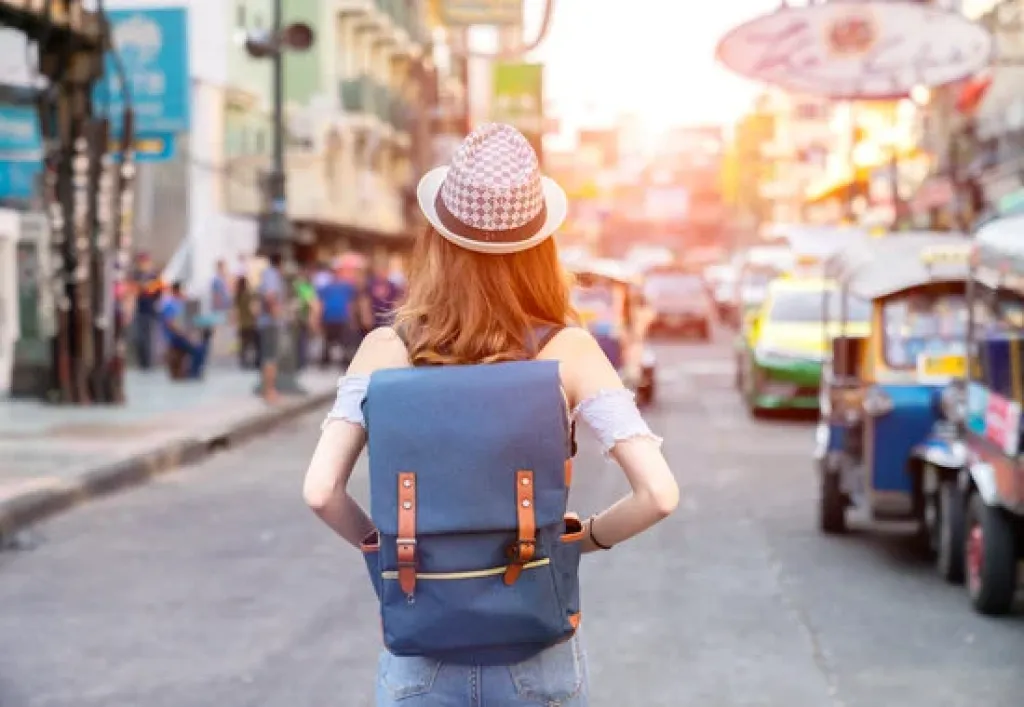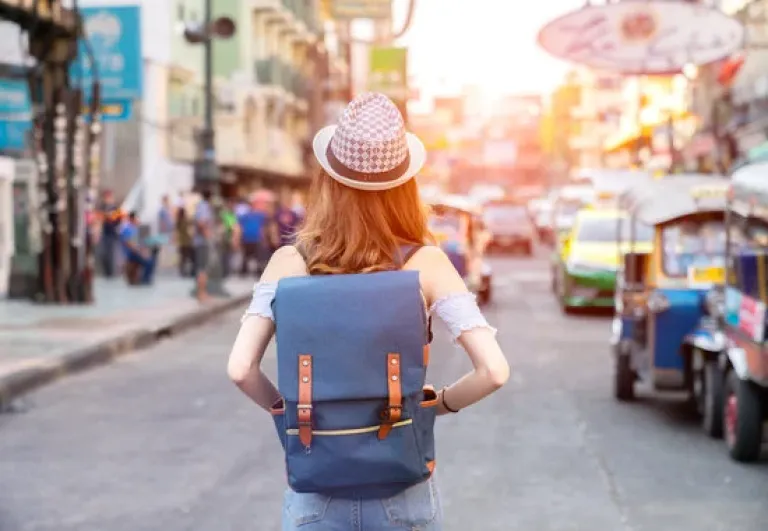Our favourite places to stay on this sleepy Cebu island.
Budget Travel Philippines: Solo Backpacker Tips

Travelling around the Philippines does not have to be expensive. With thousands of islands, tasty street food, and friendly locals, it is one of the easiest countries in Asia to explore without overspending. From budget-friendly accommodation and affordable meals to public transport and hidden destinations, there are plenty of ways to enjoy the Philippines while keeping costs low.
As someone who has travelled solo across different islands, I have picked up practical tips that make budget travel both possible and enjoyable. Here is a guide to exploring the Philippines without breaking the bank, while still making unforgettable memories.
Also read: First Time Flying Abroad: Essential Travel Guide for Filipinos
How much does a budget trip cost in the Philippines

Image credit: PIKSEL | Canva Pro
You can comfortably travel the Philippines with a daily budget of around ₱700 to ₱1,500, which is roughly 12 to 26 US dollars. This usually covers:
Hostel or dorm bed: ₱300–₱600
Three meals in small eateries: ₱150–₱300
Public transport: ₱50–₱200
Entrance fees or day tours: ₱100–₱500
Extras like water, snacks, or phone credit: ₱100
This budget allows for basic comfort while still giving you room to enjoy activities and explore different destinations.
Getting around
One of the easiest ways to save money is to use public transport. Jeepneys, tricycles, buses, and vans are all affordable options. Jeepney rides start at just ₱13, while long-distance buses range from ₱150 to ₱600 depending on the route.
Using public transport also gives you a chance to see daily life in different towns. If you are unsure of the route, asking the driver or fellow passengers is normal—Filipinos are usually very friendly and happy to help.
Budget-friendly accommodation
Hotels can be costly, but there are many budget options. Hostels, guesthouses, and homestays are widely available, particularly in tourist areas. A dorm bed usually costs between ₱300 and ₱500, while a simple private room can cost around ₱600.
Booking apps like Agoda or Traveloka are useful, but small family-run inns often offer cheaper and more authentic stays. In cooler areas such as Baguio or Sagada, a fan room is a cost-saving option since air conditioning is rarely needed.
Affordable Filipino food
Eating in the Philippines can be both tasty and cheap if you know where to go. Small eateries or carinderias offer home-cooked meals for as low as ₱50–₱80. Public markets are also great for fresh fruit or snacks at low prices.
When ordering at places without menus, asking for the price first is helpful to avoid surprises, especially in provincial towns or less touristy areas.
Cashless payments and cash
E-wallets like GCash, Maya, and GoTyme are widely accepted in cities and popular tourist spots. However, cash is still essential in rural areas where ATMs are scarce. Always carry enough cash to cover accommodation, food, and transport when travelling outside big towns.
Budget-friendly destinations to explore
If you want to save money and avoid crowds, check out these underrated destinations:
Siquijor: waterfalls, beaches, and budget inns starting from ₱500
Port Barton, Palawan: a quiet beach town more affordable than El Nido
Camiguin: adventure island with hot springs, waterfalls, and scooter rentals for ₱30 an hour
Dumaguete: a relaxed university town with cheap food, diving spots, and friendly locals
These places offer the same tropical charm as Boracay or El Nido but at a lower cost.
Helpful apps for budget travel
Several apps make travelling cheaper and easier:
Organic Maps for offline navigation
12Go Asia to book ferries and buses in advance
Trail Wallet or Spendee to track expenses
Hostelworld or Couchsurfing for affordable stays and meeting other travellers
GCash, Maya, and GoTyme for cashless payments
Best time to travel

Image credit: tool51 | Canva Pro
To save money and avoid crowds, consider travelling between July and November. This is off-peak season, so room rates and tours are often cheaper. Rain is possible during these months, so pack a lightweight jacket and plan your activities accordingly.
Also read: What You Need to Know Before Travelling Full Time
Packing tips for budget travel
Packing smart helps you save money and makes travelling easier. Bring a refillable water bottle, snacks for long journeys, a malong which can double as a blanket or curtain, a power bank, and offline maps. These small items make trips more comfortable and cost-efficient.
Final thoughts
Budget travel in the Philippines is not about limiting yourself, it is about making smart choices. Take public transport, eat at carinderias or markets, stay in family-run inns, and connect with locals. These experiences not only save money but also make your trip more authentic.
Some of the best memories come from the simplest things, like enjoying a ₱60 halo-halo on a hot afternoon or waking up in a ₱500 beachside room. Travelling the Philippines on a budget allows you to explore freely, experience adventure, and discover the country in a real and meaningful way.
Published at
About Author
Jeliefer Sumaya
Subscribe our Newsletter
Get our weekly tips and travel news!
Recommended Articles
10 Bantayan Island Resorts, Hotels, and Rentals for Your Tropical Escape 14 Best Credit Cards for Travel in the Philippines The only plastic we need for travel.
10 Best Mountain Cafes in the Philippines for Your Peak Coffee Experience Coffee date on the mountains, anyone?
10 Best Things to Do in Los Angeles Los Angeles is more than Hollywood stars. From hikes with killer views to beaches straight out of a rom-com, here are 10 must-do LA experiences for Filipino travellers or any wanderers in general!
10 Commandments for Responsible Travel Flexing Spread the good word!
Latest Articles
Oman Might Soon Be Visa Free for Filipinos: Here’s Why You’ll Want to Visit Learn why Oman is becoming a promising destination as it prepares to ease entry for Filipino travellers.
Where to See Capybaras, Otters, Moo Deng, and Other Trending Cute Animals in Philippines and Around Asia Here’s the ultimate guide for people wanting to meet the internet superstar animals up close!
NAIA Biometric eGates to Launch in December Ending Long Immigration Lines Filipinos can breeze through immigration as NAIA Launches biometric eGates in December!
Phuket Thailand New Stricter Visa Rules 2025: What Filipino Travellers Must Know Thailand is getting stricter with Phuket visas in 2025. Filipino travellers should know the new rules, visa limits, and tips to avoid being denied entry.
Manila’s New Philippine Biodome Opens: Attractions, Tickets, and What to Expect Aurora Borealis in Manila?! Yes, even small-clawed otters, parrots, scarlet ibis, and other beautiful wildlife can be seen in Manila's Philippine Biodome! Read in full to see ticket prices.

